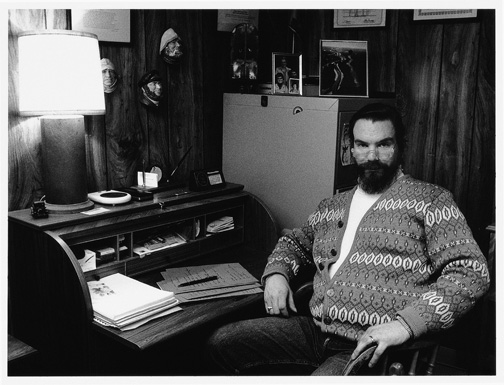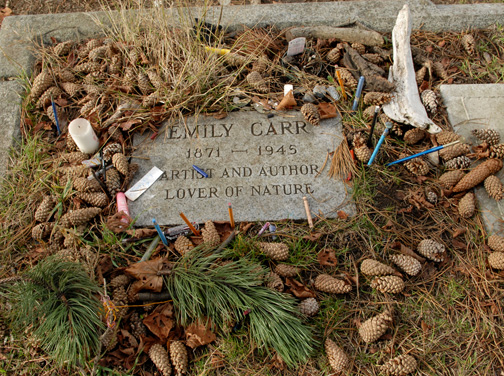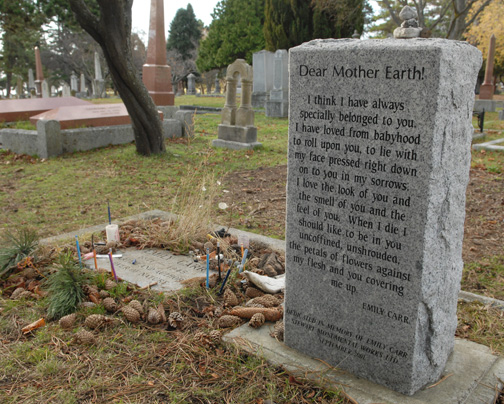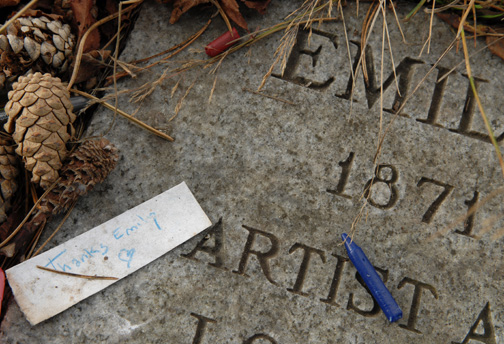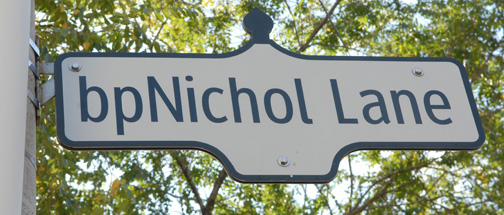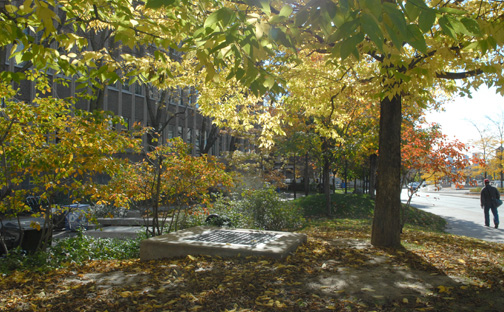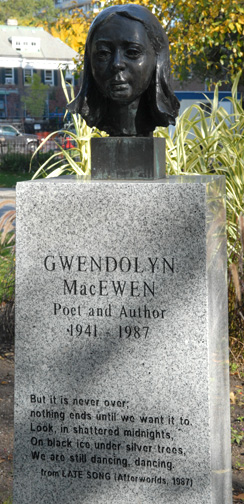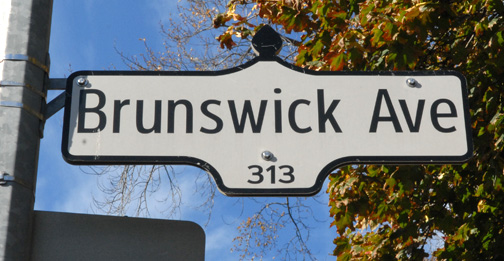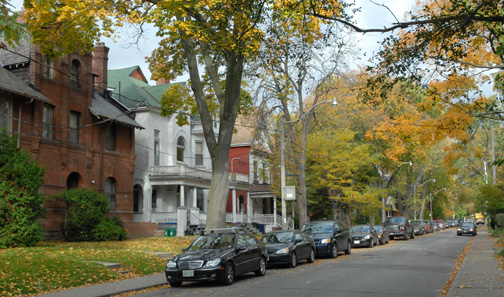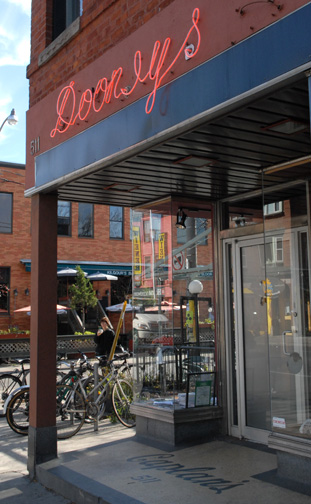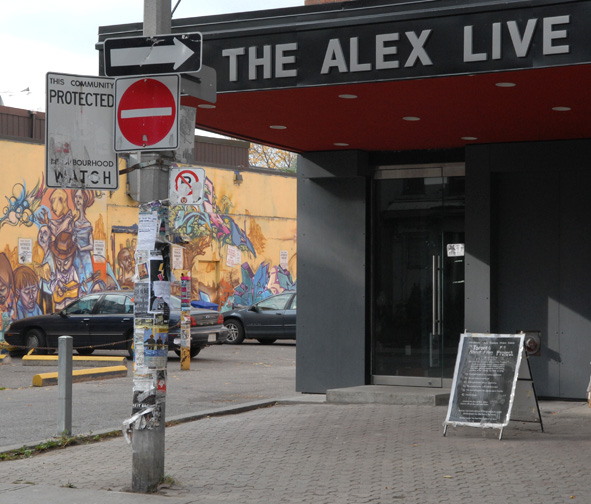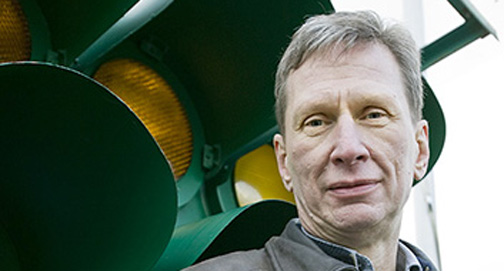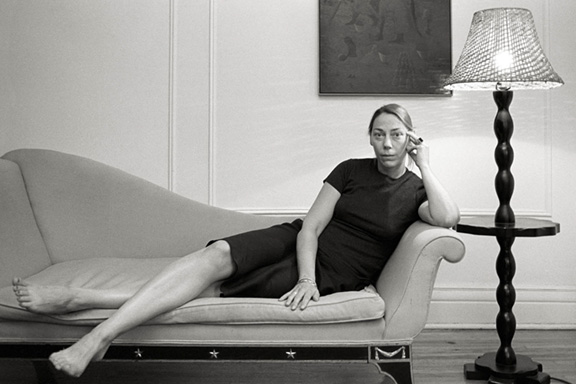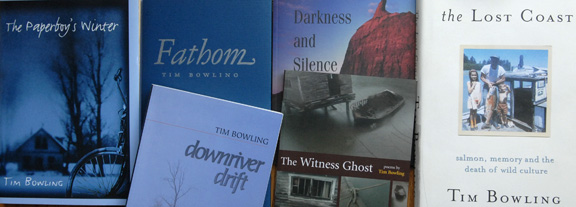Naomi Lakritz, in the Calgary Herald, has a column pointing out results from a poll showing that 50% of Canadians can’t name a Canadian author.
Tag: Writer
When I first began my project photographing writers, in Calgary in the late 90’s, Bob Stallworthy was my first subject. The photo above is from that shoot. The photograph is included in my first book of portraits First Chapter published by the Banff Centre Press.
————————————————————————————————————————-
LP: In Silhouette, Profiles of Alberta Writers is series of interviews but you can’t find them in print. How and why did Bob Stallworthy and Frontenac House decide to publish them online?
BS: In Silhouette began as a series of profiles written for the Writers Guild of Alberta’s magazine, WestWord. As the number of profiles written for WestWord grew, I started to think about what else I might do with the material. I made some very informal inquiries to several publishers in Alberta about turning the profiles into a conventional book. There was interest but the conversation always ended with the comment, “You should put these on a website.” I don’t have and didn’t have a website of my own.
I was talking with Rose Scollard, publisher of Frontenac House Ltd. and told her about the profiles and what I was getting as a response. Her initial response was similar. In frustration I said, “well, would you put them on your website?” To my surprise she said yes! From that point on In Silhouette began to take shape. To be fair to every publisher I talked to, including Frontenac House, I think the main concern was whether or not there would be a strong enough and prolonged enough market for a conventional book to make it viable.
LP: Will the collection eventually be printed?
BS: In the Frequently Asked Question section permission for use of the material has been given provided the specified conditions are met. Permission includes the downloading and printing off of a hard copy of the e-book. At the moment, there are no plans to publish In Silhouette as a conventional book. If I would ever consider this, I would negotiate with Frontenac House Ltd.
LP: What criteria do you use to establish someone as an Alberta writer? You’ve recently added an interview with Tom Wayman and one could say, despite the fact that he’s now teaching at the University of Calgary, he is considered a B.C. writer.
BS: There is no real firm criteria for determining who or who is not an Alberta writer. In my mind a person has to be a resident of Alberta for at least a full year before I would consider them an Alberta writer. Having said that, there are several writers who no longer live in Alberta who will be included in the e-book because they built the majority of their career in this province. I can make a strong case for each of those writers to be included in the e-book. In any event, the decision would always be on a case by case basis.
LP: Do you conduct your interviews, in person, by phone, email?
BS: The majority of the interviews have been done in person. A few have been done over the phone. I went out and bought a tape recorder that would plug into my phone line in order to be able to do interviews this way. So far, I’ve done one by e-mail. I much prefer the face to face interview but that isn’t always possible or practical.
LP: How often do you add profiles to the collection?
BS: There is no set schedule for the addition of profiles to the e-book. Because adding to In Silhouette means shutting the website down while making the changes, I only add profiles when I have a number of them done. When I’m ready I contact the web master and arrange to have them posted to the website.
LP: How much research do you find yourself doing before you conduct an interview?
BS: I’ve been around the writing community in Alberta for 23 years so I have come to know a lot of writers in that time. To date, all of the people I’ve profiled are people I’ve known well so the amount of hard research I’ve had to do is minimal. If I’m unsure of the titles of books or the number of books I will do a search to make sure I’ve got that kind of thing correct. Similarly, I will check on what awards may have been won, especially if I think I want to talk about a specific one. However, so far I’ve found that not knowing a lot about a person allows me to follow the conversation where ever it will go without having to impose my own knowledge on it.
LP: Have you or the publisher considered expanding the series to other provinces?
BS: There have been no formal discussions about expanding the e-book beyond the borders of Alberta. Obviously, I’ve fantasied about it. This is an ongoing project that could keep me writing until I get too old or too forgetful to do it any more.
LP: The profiles are wide ranging covering everything from biography to writing habits. As a writer yourself what do you enjoy hearing about the most?
BS: As a writer, hearing about the writing habits of others is obviously interesting. But, I must confess, I’m more interested in the person’s biography. It is the biography that tells me who that person is. I like knowing what issues each writer feels are really important in their lives and how or if those things influence their writing.
LP: During interviews people can sometimes reveal unexpected facets of their lives. Any moments like these that stand out for you?
BS: I think the most unexpected finding of doing these profiles is how many people who I’ve looked up to as writers have all of the same fears about their careers that I have about mine. Many of them have now over come those fears but when they started out, they were just as unsure of whether they could get the stories out there that they wanted to tell as I was about whether I could tell the stories I wanted to tell.
A second revelation is the sudden contrast between those writers who’ve had support from their families from the very beginning and those who have had to work at their craft with little or no emotional support from those closest to them. Part of the reason for this to stand out for me is that I’ve had total support from my wife since the very beginning. It is somewhat amazing to me that those who have not had any support have continued to work hard at their writing and have turned a tough situation into a successful one.
LP: Do you have any personal favourites among the profiles?
BS: As with my poetry, my favourite profile is usually the one that I’m working on at the time. There are some which have been a bit easier to do than others, simply because I knew that individual better than others. But no, in the end there isn’t one that I could pick out as being a favourite.
LP: Who can we look for in the future?
BS: I have such a long list of people who I would like to include in the e-book, I’m not prepared to give specific names right now. It might be a surprise to the individual to find their name mentioned here before I have had a chance to talk to them about being in the e-book. I can say that I have been in touch with some well known Alberta writers who have yet to appear in the e-book. I hope to include their profiles in the e-book as soon as possible.
LP: Give us a brief profile of Bob Stallworthy.
Bob Stallworthy-
After working as a social worker for a number of years, Bob left that field and began writing professionally at the age of 37. His poetry has been published in a number of magazines and anthologies in Canada. He has self-published two chapbooks of poetry, had a nonfiction chapbook on the history of the Old Y Community Center in Calgary and three full-length books of poetry published. His fourth book of poetry will be launched in April 2009. His work has been read on both CBC1 and CBC 2. He performed his poetry at the first Spoken Word International Writers Festival in Calgary in August 2004. His third book, Optics, Frontenac House Ltd., 2004 was short-listed for the W.O. Mitchell City of Calgary Book Prize, 2004.
Bob has been active in many areas of the writing community in Alberta over the last 23 years; participating on the Executives of several writers organizations, as a member of the Literary Festival Committee for the 1988 Winter Olympics, as a member of the Steering Committee for the first Banff-Calgary International Writers Festival, as the first Writers Guild of Alberta’s Regional Co-ordinator for the Southern Alberta Region, and the founding co-chair of the Calgary Freedom to Read Week Committee. In 2002 he was the co-recipient of the Calgary Freedom of Expression Award.
He has given workshops and readings in schools all over Alberta as well as readings in Sackville, NB, Halifax, NS and Toronto, ON. He was the Writer-in-Residence at the Drumheller Public Library in February 2005.
Bob is a full member of the League of Canadian Poets, a Lifetime member of the Writers Guild of Alberta and a member of Young Alberta Book Society.
LP: What, apart from the profiles, are you writing now?
BS: I’ve put aside writing the profiles in order to complete my 4th book of poetry entitled, Things That Matter Now. This book will be launched by Frontenac House in April 2009. Once I’ve finished working on it I’ll return to writing profiles.
LP: You’ve been involved in the Alberta writing world for a long time, any general thoughts on the state of the Alberta writing community?
BS: When I worked for the Writers Guild of Alberta in the late 1980s as Book Display Co-ordinator I was often asked, “Are there writers in Alberta?” And, of course, the answer was, “ Yes, there are a lot.” Back then I believe the display that I took around the province had less than 100 books in it. When I stopped traveling with the display after five years, in 1990, the number of books was well over 200. At that time, Alberta’s writers were just beginning to garner some real national attention, albeit that attention was still a bit hit and miss.
I think it is safe to say that the number of writers now working in this province has increased phenomenally. And now national and international recognition of Alberta writers is a regular occurrence. To the point, there are five Alberta writers short-listed for the Governor General’s Awards for 2008.
The increase in the number of writers and the number of awards being won needs to be viewed against a backdrop of political disinterest with regard to culture in general and writing in particular during the 1990s. To be sure, the Alberta Foundation for the Arts was maintained by the government of the day but the lack of interest was demonstrated year after year by the lack of increased funding for the Arts. During the same period of time there was a dramatic increase in the desire to control what was being published by Alberta publishers by controlling the funding that they received. Thankfully, this never really came to fruition.
Since the last provincial Conservative leaders’ race and the last election, and with the huge increases in revenue due to the oil patch, there seems to be an increased interest in government support of the Arts in general. The current Minister of Community Spirit seems to be making a concerted effort to show support for the cultural industry in general and writing specifically in the province. In spite of the increase in optimism, unfortunately, for Alberta writers, over the last few years a number of Alberta publishers have moved out of the province or been swallowed up by bigger organizations. This does make getting published by an Alberta publisher that much more difficult.
Despite all of the problems that seem to still be associated with a genuine support of the Arts in general and writers specifically, I believe there is good reason to be optimistic. I certainly don’t expect the number of writers in the province to decrease nor the attention that they receive.
I recently dropped by to see Emily Carr, the well known West Coast artist and writer, and, yes, she’s been dead since 1945. That doesn’t stop people like myself from visting her gravesite in Victoria’s Ross Bay Cemetery. The cemetery is the final resting place for a who’s who of British Columbia history but it’s only Carr’s site that draws fans who leave notes, and art supplies and pens. Carr’s artwork can be seen in many major Canadian galleries and her books, including Klee Wyck and The Book of Small and are still in print. Fans can also visit Emily Carr House, the house where she was born which is maintained as a tribute to Carr and her work.
Carr’s grave marker surrounded by pine cones, pens, pencils, brushes and other items left by visitors.
A sample of Carr’s writing at her grave site.
A note and crayon left at the site
Emily Carr house
Greg Gatenby’s ‘Toronto, A Literary Guide’ published in 1999 is a thick book that provides a tour of residences and places in Toronto that have a literary connection. This March, Stephen Cain, writing in Open Book Toronto, told about a walking tour of the Annex area that he and another person designed using Gatenby’s book and updating to add more features. On a visit to Toronto last week I used both the book and Cain’s article to guide me on a wander through the Annex.
B. P. Nichol Lane off Huron Street south of Bloor.
Matt Cohen Park at the corner of Spadina and Bloor
Plaque in Matt Cohen Park
Gwendolyn MacEwen Park at Walmer and Lowther is a memorial to the poet
A bust of the poet and a portion of one of her poems.
Brunswick Avenue, a popular street for writers to reside.
Dooney’s Cafe at 511 Bloor , until recently a popular spot for writers to gather and the inspiration for the online site Dooneys Cafe, however, the owner sold the restaurant and is now in the process of opening a new spot The Alex Live at 296 Brunswick Avenue which Max Fawcett in the current issue of Toronto Life is touting as the new spot for writers to hang out.
The Alex Live
Terence Byrnes
LP: You have been taking photographs for many years, what drew you to writers?
TB: Well, I’ve also been writing. My first collection of short stories was called Wintering Over, I published an anthology called Matinees Daily, wrote for many magazines, and, during a dark and busy period of my life, ghost-wrote other people’s books. I fessed up to that last bit in an article in Maisonneuve magazine called “My Life as a Ghost.” For the record, I began publishing in the late 60s. First poetry, then reviews in the so-called counter-culture magazines of the era like Rolling Stone, then fiction. Given this background, it might have been better to have asked how I could have avoided writers.
LP: Why did you include the quotation from photographer Irving Penn (“I can say that …I found pictures trying to show people in their natural circumstances generally disappointing”) at the beginning of your book since “people in their natural circumstances” accurately describes your images?
TB: Penn’s description of “natural circumstances” is actually pretty vague since he designed a portable daylight studio and shipped it to the locations of his more remote shoots. He may have meant that the idea of “natural” is actually a highly mediated one and that it can only be approached through the artificiality of staging. That, in any event, is the meaning I took from it.
Louis Dudek
LP: Was it a challenge to find a publisher for the book? Books of photographs are expensive to produce.
TB: Indeed they are. Other publishers have been enthusiastic about the project but have suddenly vanished from my In-box when they costed the project. However, Simon Dardick of Véhicule Press pursued the project with more enthusiasm, commitment, and greater skill than the others. We applied to the Canada Council and received support from both the Visual Arts section and the Writing and Publishing section. This was particularly pleasing because so much art that combines two normally distinct areas—like writing and image-making—isn’t very interesting in either area. The Canada Council’s support of both areas was a validation of the idea and of the work itself, as well as a financial necessity.
LP: Your comments on the difference between photographing men and women were interesting, essentially that women are more sensitive about photographs of themselves. Care to comment on that further?
Susan Gillis
TB: Sure, but the word “sensitive” isolates women in a way that makes me a little uncomfortable. I’ll turn the tables for a moment and say that society finds endless ways to valorize men despite the way(s) they look. Male slackers, nerds, slobs, sexual indiscriminates, bikers, and outlaws can all find a place on the ladder of sexual status that Hollywood and society in general deliver to us. The range for women is much narrower and so often refers to their sexual availability (or not). Consequently, women have to be more “sensitive” because they’re judged by a different, and less flexible, standard.
LP: You gave each writer the instructions that your photographs would be made “where they lived, worked, or played.” Why did make this request?
TB: First, pragmatism. When I was co-editing Matrix magazine, we were, like all literary magazines, broke. So I did the editorial photography when we interviewed or profiled an author. Often, that was at the writer’s home or favourite hangout. So the work developed from there. However, there was a proscriptive side to the shoots as well as a prescriptive one. Author photography operates in what I’ll call the “everyman” mode or the “frontispiece” modes. The everyman mode takes the easy, egalitarian road: a snapshot. The frontispiece mode starts to circle the author’s pate with the literary garlands of classical art. Historically, these “garlands” were a limited set of poses, many of which were derived from classical sculpture, and a familiar set of visual references that included busts of Shakespeare or Homer, staffs, literal garlands, open books, pens, and other devices. Now, we still use many of these signs of literary and social authority, but we’re also fond of bricks (the urban, the cool), books (unchanged for the last couple of thousand years) and computer screens (savvy). So, I also told each writer that we would avoid those clichés.
LP: The writers are all English speaking and you explain why. You like to talk with your subjects and your weak French would have interfered with that. It seems though that any decision to exclude one language or another in Quebec makes it a political or ethnic issue. Do you think so?
TB: Sure it is, but if we choose to look at it that way, our feet quickly become tangled in the terminology. For instance, Anglophones are, by definition, an ethnic group within Quebec, just as, let’s say, Filipinos or Moroccan are. Who would have been bothered by a book about Filipinos or Moroccans? However, I’ll stop myself from wading any further into that swamp. Closer to Home is not about Anglo writers in Quebec, and it’s not another dusty warehouse/museum/telephone book of candid author snaps, like People magazine with a lesser degree of celebrity and titillation. It’s about the representation of writers in a more general sense, and I’m most familiar with English-language traditions of representation. Also—and this is critically important—a strong sense of common ground and trust has to be created to make a shoot successful. Remember, I’m working very hard while talking. Accomplishing all this while speaking French would have been beyond my talents.
LP: The photographs in the book are all from Montreal, have you been photographing writers from other places as well?
TB: In a limited way, yes. However, if someone comes from Dublin or Chicago, stays in a hotel, reads in a public hall, and sits in a classroom, the opportunities for establishing anything but a documentary relationship between the figure and the setting are terribly limited.
LP: What do you find is the greatest challenge to a photographer creating portraits? Is it technical, is it personality, location or a combination of everything?
TB: May I just say “a combination of everything” and be let off the hook? If not, I’ll put the availability of useable light at the top of the list. Then comes personality. For instance, if the subject insists on being seen in front of a bookcase with fingertips grazing the temples in the Arcadian mode of calm repose, I’m sunk. There is, however, another element in the photographs that’s hiding in plain sight. I’m also a printmaker, and that part of me paints with light—to borrow a phrase from Ansel Adams—on the computer. The camera does not see as the eye does; that re-creation must be accomplished by the printmaker.
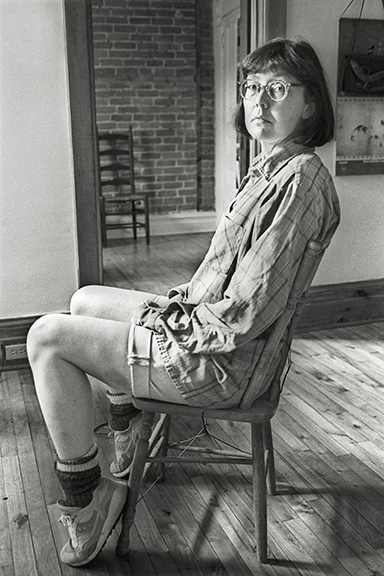
Anne Carson
LP: Do you crop your images when making prints or do you print them full frame (i.e., everything that was on the original negative or digital capture).
TB: Except for tiny bits of trimming around the edges, the vast majority are full frame. There are a few exceptions—Rawi Hage and Norm Sibum, for example. The whole full-frame thing is interesting, though, because it links to a naïve notion about the authenticity of the “documentary” image. That is, cropping is associated with lying. It’s nonsense, though. One of the first principles of all art is that of selection, and a full frame is as much of a selection as a partial frame.
LP: Montreal has a great tradition of documentary photographers. Were/are any of these photographers and their work influences on you?
TB: I wonder who you have in mind. Sam Tata? Gabor Szilasi? Louise Abbott? Serge Clément? Of course, with Serge, we’re drifting quite far past the borders of the “documentary,” but if I had to make a link, it would be with his work. He’s a very fine artist.
LP: Scanning other books on the market that showcase writer portraits reveals that they are all black and white images. You photographed originally with black and white film but now shoot digital images so have files in colour but choose to print everything black and white. What is it about black and white photographs and images of writers?
TB: There are playful and speculative answers that might nevertheless have some weight. I could say that pre-20th century frontispiece portraits are black on white, or that we see Eliot or Faulkner, or Stein primarily in black and white, and that current representation wishes to borrow from that historical authority. That has some truth in it. Also true is the fact that the colour in an uncontrolled environment can be very distracting. Colour can also make it more difficult to design a coherent frame.
LP: What makes you include or exclude details from a photograph? Your photograph of Sheila Fischman has space (walls) around her but that space is filled by photographs and mirrors while in your photo of Trevor Ferguson almost half the space is taken up by a blank wall?
TB: Trevor’s wall isn’t blank! It’s filled with patterned wallpaper that works with the patterned couch he’s sitting on. The figure is then isolated by a ground of pattern. That’s one of those designed frames I was talking about. The image of Sheila is intended to speak directly to the written text, which is about memory, loss, and reflection.
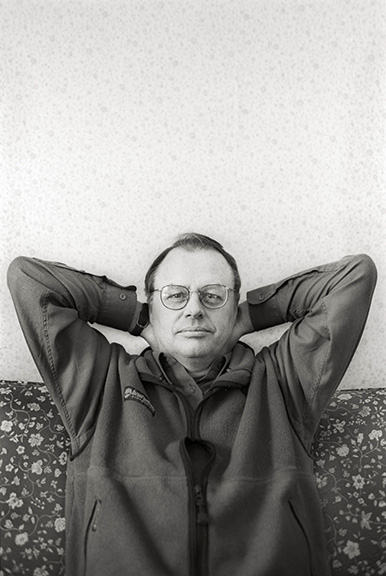
Trevor Ferguson
Sheila Fischman
LP: You include a short description of your visit and photo session with each writer. Was it difficult to keep each piece so short? I assume that with at least some of the writers you could have written several pages about the session.
TB: The short descriptions were intended to function in ways that paralleled the function of the photographs. Like the photographs, they describe a point (or points) in time. They are suggestive of personality (of the writer-photographer as well as of the subject), and they may at times contradict the implications of the image. The idea is that neither mode communicates anything like an essential truth about character, that both are representations, that the writer being portrayed is the object of different kinds of gaze. The book, as an idea, at least, is a function of both text and image.
LP: Are your personal favourite photographs based on the image or the session/relationship with the writer?
TB: On the image entirely. I left each shoot (there were over a hundred) cursing myself for opportunities missed and technical things done poorly. I cursed myself again when I saw the failures of the negatives or the digital captures. There were only a few times when I looked into the viewfinder, immediately knew I had something good, and got it. Those were the times when I knew there was something more than chance at work in this enterprise of making photographs.
Stephanie Bolster
LP: Will we be able to see any of the photographs in an exhibition soon?
TB: The work has been exhibited a number of times already but the show has not travelled widely. Art exhibitions face the same problems as art book publication: they’re expensive. If the book had been conceived and marketed as the kind of collection that I dismissed earlier as a “warehouse,” there would probably be more interest in another show. Viewers and funding agencies like work that claims to speak of a locale or a people. My only claim for the photographs and written portraits in Closer to Home is that they speak of representation itself.
LP: Is this an ongoing project or does the book signal the end of this group of photographs?
TB: It’s an end.
Terence Byrnes book of writer portraits Closer To Home is published by Véhicule Press
Terence Byrnes’ work can bee seen at this website: www.springfieldfolio.terencebyrnes.com
LP: Your childhood, salmon fishing and a certain part of the lower mainland where you grew up play an integral role in most of your writing. Can you fill us in on that background?
TB: Re; my background: I was born in Vancouver and immediately taken under the Fraser (via the Deas Tunnel) to Ladner – a salmon-like little journey appropriate for someone who’d grow up to be so involved with that magical species. I had an idyllic childhood at the mouth of North America’s wildest river, a Huck Finn childhood of raftings and roamings, except, unlike Huck, I had loving and supportive parents! What can I say? I was very fortunate; children weren’t then supervised every second of the day, my family worked in the salmon fishery, and so I spent a lot of time on my own in the
outdoors. Everything I write comes out of the sense of awe I drank in daily
as a boy.
LP: When you finished high school you went away to university, got your degree, and then came back to the fishing industry for a fair number of years. Where and when did the urge to write begin?
TB: Re: the urge to write: It was always there. In grade one, I remember answering that infamous question “What do you want to be when you grow up?” with “A writer.” Why? Who knows?
LP: Did you leave fishing simply because it was a dying industry or did the writing take over as your primary focus?
TB: As much as I appreciated the work of salmon fishing, I was never entirely at ease in the culture. In fact, I was only an appendage to it, as my older brother, Rick, rented the boats and made the decisions. I got my hands wet and bloody, right enough, but the stresses were mostly his. All through the 80s, I was focussed on the apprentice work of the poet and novelist (ie, reading a lot and writing a lot, most of the latter material being bad, of course)
LP: You now live in Edmonton. How did you end up there?
TB: Long story. To be brief, I moved to be with the woman who is now my wife. Funny thing is, I have very deep roots in Edmonton – my great-grandparents moved here from Ontario in 1905 and my father was born here in 1923. I’m only now beginning to explore these roots in my work.
LP: Is it a challenge to maintain your ties, creatively, to the west coast while living on the prairies?
TB: No challenge at all. But perhaps that’s because I visit the coast at least twice a year (for several weeks at a time) to see my family. In any case, Edmonton, like my hometown, has a river running through it. That helps.
LP: You have written poems and a novel set in Alberta but, if anything your Alberta focus seems more on the Badlands area rather than Edmonton. Why, what appeals about an area that is so different from your west coast home?
TB: The badlands reminded me very much of the west coast circa 1970 because of all the darkness and silence (the title of my poetry collection that contains several badlands poems). I’d sit on the porch at night in the Red Deer River Valley and feel that I was standing on the deck of a Fraser River gillnetter – the same sense of mystery and awe, the same exhilarating closeness to the source of things. But I should point out that Edmonton is becoming more of a focus. I’m currently writing a full-length collection of prose and poetry that investigates my family’s pioneering role as Edmonton
beekeepers.
LP: Even when you do write about Edmonton, and I’m thinking here of the poem A Cup Of Coffee In Solitude which starts with the line –January in Edmonton – later you write -A car passes on the muffled road, spawning salmon slow. Do you think that earlier life will always infuse your work?
TB: Yes. as Flannery O’Connor said, “Who ever’s been through childhood has enough material for several lifetimes.”
LP: Your last book, the memoir The Lost Coast talks about growing up in Ladner on the Fraser River, your family and fishing. Your two novels Downriver Drift and The Paperboy’s Winter are set in that area and deal with the land/riverscape, families and fishing. Most novelists do mine their own lives but are careful to point out that the stories are fiction, only loosely based on real life. You sort of undermine that in the memoir by telling the real life stories that parts of the novels are based on. Any thoughts on that?
TB: Hmm, I wasn’t aware that most writers are careful to make the point re: fiction vs autobiography. It’s an odd thing to worry about. Good writing is good writing. Besides, as anyone who’s ever written a memoir will tell you, memory plays a lot of tricks with reality. Even when I’m writing straight out of my own life, I’m fictionalizing much of the time. The key point, of course, is that the writer must transmute lived experience into meaningful art.
LP. In the acknowledgments for your novel Downriver Drift one of the people you thank is writer Jack Hodgins. Hodgins is noted for the depiction of Vancouver Island life, or at least a certain Vancouver Island life, in his novels. Did you ever talk about the details and the sense of place in writing?
TB: Jack Hodgins actually edited Downriver Drift. And what a gift that was for a beginning novelist! Jack is a superb editor, sensitive to every little nuance of prose style and critical in the most encouraging way. I don’t recall that we talked much about the sense of place, likely because it’s not something either of us would really consider – we just write out
of the worlds we came from, without doubt, without apology. Most of our editing discussions were more technical.
LP: You have two new books of poetry out this fall. Nightwood Editions is publishing The Book Collector and Other Poems. What can you tell us about this book?
TB: Many of the poems in The Book Collector were written when I lived in Gibsons from 2004-2006, so there’s a Sunshine Coast flavour to many of the poems. Briefly, the book contains nearly 40 poems touching on a wide range of subjects, from books and art to soccer and salmon. I hope the metaphors are memorable; I put a lot of faith in them.
LP; Your other book of poetry coming out is from Gaspereau Press, the magnificently titled Refrain For Rental Boat #4. It is a 12 page , limited edition book priced at $160. Gaspereau is noted for their beautiful regular editions so I’m assuming this will be something quite special. What’s the story behind this book?
TB: Refrain for Rental Boat #4 was removed from my 2006 book, FATHOM, because the editor and I didn’t think that it fit tonally with the other poems. Then I read the poem after publication, at one of Gaspereau’s annual parties in Kentville, NS, and Andrew Steeves, who liked it a lot, wondered why it hadn’t been included in FATHOM. After I told him, he said he’d like to do the poem as a limited edition. There’s only been four copies finished to this point, three of which I have. 45 copies will be made in total, and I believe the cost is $100.
LP: Earlier this year you were one of the winners of the Guggenheim Prize, the only Canadian winner. It’s certainly an honour to win and the prize money attached would be welcome too. This was your first attempt at the Guggenheim, did you have any expectations of being chosen for the award?
TB: No serious expectations, but I never apply for things if I don’t think I have a chance. And the Guggenheim is an award whose criteria seemed a good fit for me, in that the Foundation wants to fund those with a solid publishing record who seem likely to continue publishing.
LP: You are a prolific writer, have published books of poetry, novels, a memoir and edited a book of interviews with poets. You won a number of awards for that writing as well and yet you seem to fly under the radar as far as the press goes. It’s difficult to find interviews with you or even articles about you. It was surprising that even for the Guggenheim, it appears only the National Post did a stand alone interview with you. Is that a deliberate strategy on your part? Do you avoid media coverage? If not why do you think you get overlooked.
TB: I don’t exactly avoid the media, but I certainly don’t seek them out either. Newspapers, TV, magazines (even, gasp, websites) rarely pay for a writer’s time, and, given my busy domestic and writing schedule, I can’t afford to work for nothing. Usually, though, I’ll do interviews when I have a new book out. All things considered, I’m a pretty amenable type.
LP: In The Lost Coast you make the point that you don’t live in the past, that you type on a computer, communicate with your editors over the internet but a certain yearning for the past and maybe even some anger at losing that past seems to be part of your writing. Do you think so?
TB: Absolutely. But I’m not stupid about the past either. Of course there’s no Golden Age. On the other hand, there’s almost no fishing industry anymore, the growth of the farmed fish business moves along in happy tandem with the growth of neo-conservative conformity, and every year moves me closer towards death – yearning and anger seem reasonable enough.
LP. What’s your next project?
TB: I’ve just finished a new non-fiction ms. which is entirely different from THE LOST COAST. In fact, the whole story takes place in Edmonton, mostly in a library, and deals with my interest in a little-known American poet named Weldon Kees who jumped off the Golden Gate Bridge in 1955. I’m also doing preliminary research for a new novel set on the Fraser River and in the American South in the mid and late nineteenth century.
LP: When you were working as a fisherman, you were also writing poetry, correct? Was your writing something that ever came up with other fishermen and if so, what was the reaction?
TB: No, my writing never came up, mostly because I never brought it up. But then, I wouldn’t want to talk about poetry with most graduate students in English Literature either! In fact, my salmon fishing poems, all my poems set on the Fraser, have gone over very well with Ladner folks.
LP: In our memoir you indicate your dissatisfaction with the school system so I’m assuming your kids are home schooled? How does that affect your writing, what special allowances do you have to make to your writing schedule?
TB: Yes, my kids are home schooled. Not only do I think school is one of the great brainwashers into North American culture and capitalism (a culture not entirely repellent, of course, but one that could be resisted a bit more seriously), I just don’t want not to see my children for six hours a day, five days a week. I mean, I really enjoy them. I’m selfish that way. On average, I suppose I write two hours a day and parent the rest. This is a tricky schedule when I get deep into a book, but hell, children are more important than books.
First off, let’s look at who Rob Wiersema is. You’ve been described as a writer, journalist and bookseller. You’re also married and a father. How do you balance all these roles?
Not all that well, depending on the day, to be perfectly honest. The fact is, my job at the bookstore is full time. Writing is a full-time job (to say nothing of the on-going mental detachment from the “real” world which seems to plague me fairly often). And the amount of reviewing I do is pretty much a full-time job. As a result, ”balance” doesn’t really enter into it, and things end up sacrificed. One of the main things I’ve sacrificed is sleep. I get up at about 3.30 every morning to write, and get to bed around 11, so… the math is actually pretty brutal. I went to the doctor a few weeks ago and he actually prescribed me 2 nights of 9 hours sleep each per week, and at least two naps of more than 3 hours duration per week. I haven’t filled that prescription as yet… maybe once the new book is done. The level of busyness has actually been pretty hard on my family life. I miss out on a lot of stuff with Xander, my son, being locked in my writing studio for the bulk of most weekends. I try to make up for it, though — we toured as a family through the Pacific Northwest for Before I Wake, which was a terrific time (family-wise, at least). And we went on a cruise and to Europe for three weeks this spring, which was lovely. I comfort myself with the awareness that he’s watching me, and gaining life lessons from what I’m going through. When I was growing up, dreams were too-big things that were unachievable for most mere mortals. My dream of writing was, as a result, seemingly out of reach. I’m hoping that Xander, in seeing what I do on a daily basis, and knowing what has happened with my dreams, learns that dreams CAN and DO come true, but that they don’t come free — there’s always a price to be paid.
******************************************************************************
Your first novel “Before I Wake”, published in 2006, received positive reviews and a fair bit of acclaim. You’ve been involved in the book trade a long time. Did you expect this kind of response?
I didn’t expect it at ALL. As a reviewer, and as a bookseller especially, I’m very familiar with what gets published and what gets well-received, especially in this country. All the old CanLit/Can-Publishing cliches are rooted, at least partially, in fact. And Before I Wake conforms to none of those cliches. Plus, it’s a book that’s hard to pigeonhole, genre-wise. It’s a book that has an unorthodox narrative structure, with the multiple voices. It’s a book that straddles a lot of lines. When I wrote it, I had no notion that it would even be publishable. And once it was in the publication process, I had no hope that it would have any kind of success. I was thankful that I had a large family, as I really believed that they would be the only ones buying copies, the only ones reading it. I’ve never been so happy to be wrong.
******************************************************************************
This was your first published novel but you had been writing for a long time. Was it the first novel you’d written or do you have other manuscripts tucked away?
There are four or five “first novels” kicking around in various drawers and on 5 1/4 inch floppy disks. Most of them are there for eternity, though there is one that I’m thinking of revisiting at some point in the future — starting with the premise and building it from scratch. The writing is terrible, but the idea is too good to walk away from. I think.
******************************************************************************
You were very up front in a number of interviews that you took a calculated approach to getting this first novel published. Getting your name known through reviewing, meeting editors and publishers so that when you sent out that first manuscript people would know who you were. Was there much reaction to those statements from other writers? Did people see you as too calculating or just working smart?
Ah ha! Somebody other than me has been googling me! Part of that WAS calculated, part of that was just a function of reality.
The reality part: as the event coordinator at Bolen Books, I make an
annual pilgrimage to Toronto for BookExpo (the annual trade
show/gathering of the publishing tribes), and as a result I’ve gotten
to know a lot of people in the trade. Not with any nefarious plan to
get published, but just as a function of the business. Well, that
and the nefarious plan to cadge free drinks — publishing types are
always good for a free drink or two.
Distinct from that, though, I did, semi-consciously at first, then
with more deliberateness, set out to be noticed as a writer. Every
young writer does. Every young writer has to. If you write
non-fiction, maybe you get your name out there by writing journalism,
or becoming known in your particular field. As a fiction writer,
they typical path is the get some short stories published in the
literary quarterlies, making your name known through those credits,
so when a novel or collection is being submitted there’s some
awareness there. This is a process that’s been going on for
generations — it’s like the farm team system in hockey and baseball.
The type of writing that I do, however, isn’t the sort of stuff that
finds a home in the literary quarterlies. And around the same time I
finished the first draft of Before I Wake, I was starting with
reviewing. And it occurred to me that with the literary quarterlies
being unavailable to me, this would be the way that I had to get my
writing noticed. So I made a point of reviewing a lot, and reviewing
well, knowing that the pieces were being read by others in the
industry. I My copping to this (which, again, is the same thing writers have been
doing for generations, just not usually with reviewing) met with
considerable disdain from some fellow writers, who assumed that if I
was writing reviews with an awareness that I had an audience in the
publishing community, then I MUST have been pandering to those
publishing types, writing puff pieces and the like. Which is
fundamentally NOT the case — I stand by my reviews, positive and
negative. I calls em like I sees em, and if that means that I go on
the record as saying that a certain CanLit figure pulled her punches
in her latest book, I don’t hesitate (though she did manage to
bad-mouth — without naming names, naturally — the length and
breadth of her ensuing book tour). If it means I review books from
even my own publisher negatively, well, so be it. I And I have reviewed books from Random House negatively, both before
they were my publisher and after I signed the contract. I stand by
those reviews. 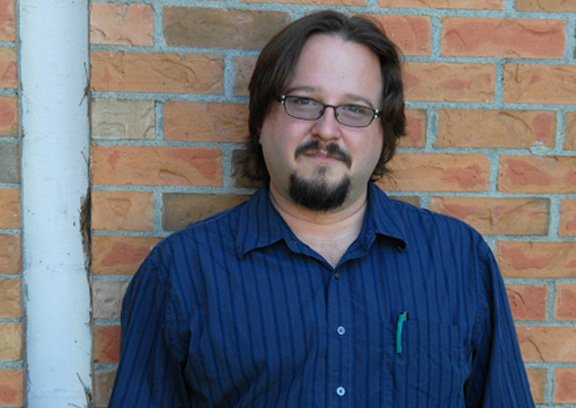 Period.
But, sadly, some people couldn’t wrap themselves around what I felt
was a fairly clear matter of integrity and continued to look down
their noses on my publication. So be it.
The fact is this: unless you’re a celebrity, a book doesn’t get
published because you know someone to say hello to them. And a book
doesn’t get published because you might have reviewed other books
from that publisher. Brass tacks: a book gets published because a
publisher sees merit in it, and thinks it might sell. Period.
Period.
But, sadly, some people couldn’t wrap themselves around what I felt
was a fairly clear matter of integrity and continued to look down
their noses on my publication. So be it.
The fact is this: unless you’re a celebrity, a book doesn’t get
published because you know someone to say hello to them. And a book
doesn’t get published because you might have reviewed other books
from that publisher. Brass tacks: a book gets published because a
publisher sees merit in it, and thinks it might sell. Period.
******************************************************************************
Would you recommend the same route to aspiring writers?
It takes a certain mindset to be able to review. You have to have a certain fighting spirit, and a willingness to piss people off. You also have to have the opposite: a willingness to praise when you feel a book deserves it. And you have to have the fortitude to stand by your opinions, no matter what happens. An example: there was a novel published a few years ago which I thought was fundamentally flawed, and I said as much in my review. The book went on to become a bestseller, and to win prizes in its category. Do I think I was wrong? Nope. I stand by my well-argued and supported position. Though I’ve just about managed to get over my fear that the writer is going to punch me in the head.
******************************************************************************
What is the latest update on “Before I Wake” now? (Sales, What countries has it been published in etc)
Let’s see, it’s been sold into ten or twelve countries, the German and Greek editions came out in July, along with the US paperback. Poland, Israel and China are coming this fall, I think… Sales in Canada have been very good, and the book keeps trucking along. It’s too early to tell how it will do overall in the US — the hardcover performed fine. And it’s done gangbusters in paperback in the UK over the past few months. Gangbusters.
******************************************************************************
You signed a two novel deal. What is the status of the second book?
I’m finishing it even as we speak. It should be delivered on time to Random House in September. I think we’re looking at a fall 2009 pub date.
******************************************************************************
Where and when do you write? Do you have a personal space /office or are you scribbling away between book stacks before the bookstore opens?
One of the smartest things I did for my career was to start renting an office last spring (2007). It’s actually a 2 bedroom basement suite on the same block as my house. I get up every morning at 3.30, and I physically GO to work — I get dressed, I leave the house, and I go to the work space. It’s a valuable psychological tool, to separate work from home — if at all possible, I highly recommend it.
******************************************************************************
When that book is finished, what’s next? Any thoughts of writing in other genres, say non-fiction (since you’re written a lot of journalism)? After that book, the next one. A collection of short stories this time, perhaps — I wrote quite a lot in the fallow time around the publication of Before I Wake. But I’ve also got a couple of novels percolating in the the cerebellum, so we’ll see. I don’t see a non-fiction book in my near future — I think it might be laziness, but I’m not big on research. And I like conversations where I get to make up both sides — it’s easier that way.
******************************************************************************
You have done a great deal of book reviewing, for quite a number of publications. Those reviews, as would be expected, are not always positive. You also host a great number of writers through the book readings you arrange at Bolen Books. Is that ever a problem? Have you ever had to introduce a writer whose book you’ve been less than kind to?
Oh, it’s been a problem, that’s for sure. It’s made for some uncomfortable evenings. Those two authors I mentioned previously? I hosted both of them shortly after the respective reviews ran — to say that there was tension would be vastly understating the case.
******************************************************************************
You’ve seen a lot of writers come through on book tours and heard the stories, good and bad. Any great stories out of your tours for ”Before I Wake”?
Well, certainly none fit for a family-friendly operation like this! Nah. To be perfectly honest, there wasn’t a whole lot unique or out of the ordinary as far as book tours go. I had some fabulous events, including a couple on the Gulf Islands (at Galiano Island Books and at Phoenix on Bowen) that were great reminders of the value of small, closely knit communities. The book’s launch in Victoria was one of the highlights of my life — I just wish it wouldn’t have passed in such a blur. And the event I did with Pages in Toronto, an audio-visual presentation about the music that shapes my process and my work, was unbelievable. As was the follow-up reaction, which included a blogger referring to me as something along the lines of ”the rock-star of CanLit”. That makes me smile… I always wanted to play guitar. One thing that touring did remind me of, though, was the strangeness of this country. I went out in late September, leaving Victoria on Sunday morning. The Saturday afternoon, we were out playing miniature golf in shorts and t-shirts, with temperatures in the mid-20s. The next day in Edmonton? Minus 3 with the windchill. Two days later in Toronto? Almost 30 degrees. How do you pack for that? The US tour of the Pacific Northwest was a bit of different experience. The audience attendance wasn’t quite what we had hoped, and as we were driving across the plains, from Spokane to Oregon, I realized I was doing what every fledgling rock star (see, there it is again!) does: I was paying my dues. That made it easier to swallow. As did a great off-night on the water in Cannon Beach, and a great event in Bellingham.
******************************************************************************
Now that you’ve got a published novel behind you, do you get many requests for book cover blurbs from other writers?
I’ve had a couple of requests, and if I’ve got the time, I’m happy to do it. It seems strange to me to be in a position where my imprinteur might be construed as a hallmark of quality, but every bit helps… The thing is, if given a choice, I’d prefer to review a book than to blurb it. If I’m in a position to blurb it favourably, I think there’s probably more value, in terms of attention and public profile, to a positive review.
******************************************************************************
Who are you reading right now?
Let’s see, what have I read recently. The new Paul Auster (Man in the Dark), which is a very strong book, very human. The new Rawi Hage (Cockroach), which is a tour de force, and certainly pays out on the promise he showed with DeNiro’s Game. The new Tim Winton (Breath) is fabulous. And probably the best book I’ve read recently is Andrew Davidson’s debut, The Gargoyle. This is one of those rare books that actually delivers on the hype, and on the news of multi-million dollar advances.
******************************************************************************
Any writers you hope to host for readings during the upcoming fall book season?
That’d be telling, wouldn’t it?
******************************************************************************
Finally, if you could get any writer for a reading at the bookstore, who would it be?
You know, I’ve been doing this for a decade now. I’ve had a lot of ’visiting author’ dreams come true. Hosting Neil Gaiman a couple of times (if you ever get a chance to go for dinner with Neil, you should — the man knows his sushi). Hosting Timothy Findley for what turned out to be his last book-tour event. Introducing Salman Rushdie was such an overwhelming experience that I actually had to stop and savour the moment. Having said all that, though, I would love to host Stephen King. And getting the opportunity to welcome John Irving would be a dream come true — The World According to Garp made me a writer, and I’d love the opportunity to thank him in person.
You can find out more about Rob at his website.
Miriam Berkely
A link and story from Eric Kisor’s The Reluctant Blogger after reading an interview with photographer Miriam Berkely in Eric Forbe’s Book Addict’s Guide To Good Books.
Berkely specializes in photographing authors and there are a lot of samples of her work on all the links. Check out the image of Stephen Hawking. In the Forbe’s interview Berkeley says of the Hawking photo ‘My favourite of Hawking was shot in a horizontal format, although when it was used for publicity for the first American edition of A Brief History of Time, it was cropped and sent out as a vertical image with a fair amount of its Cambridge background removed, and some publications published only Hawking’s smiling face, which was a very small part of the entire image.’
Influences
Photographing writers is not new. Many other photographers have specialized in images of authors.
Two photographers who introduced me to the idea of photographing writers were John Reeves and Sam Tata.
Reeves, a Toronto photographer who works with a large format camera, is known for his images of people connected with the arts, including writers. He shoots tightly cropped images of faces. His book About Face was published by Exile Editions.
The late Sam Tata, a contemporary and friend of the great French photographer Henri Cartier-Bresson, published several books showcasing his images of writers. Tata immigrated to Canada in the fifties and lived in Montreal working mainly for magazines.
Every artist tries to be original in his or her work. Reeves, through use of a different camera format and a studio setting, creates images that look far different from mine.
Tata, however, worked with 35mm and shot in available locations so I probably feel more of an affinity with him
I did not meet Sam Tata until very near the end of his life. He was suffering the effects of several strokes and a normal question and answer conversation was not possible. However when we looked through his scrapbooks, the memories took over and anecdotes about the images and people came out.
Currently the biggest name in writer photographs is the American Marion Ettlinger. Her stylized black and white portraits grace many book covers. A collection of her images was published as ‘Author Photo’.
Two British photographers, who worked for London newspapers, Sally Soames (The Times) and Jane Bown (The Guardian) are also noted for their pictures of writers. Soames has a collection of her photos out titled simply ‘Writers” and Bown has had a number of books out that include her writer portraits.
Finally, the grand dame of writer portraiture is New Yorker Jill Krementz, a photographer who loved the subject so much she married one her subjects, the late Kurt Vonnegut.
As Good As Any Place To Begin
A is for Atwood, which is as good as any place to begin.
That’s her photograph at the top of this page. The other portraits are Peter Oliva (at left) and Wayson Choy.
I make a living as a photographer but am fascinated by the world of writing. All writing and all aspects although I probably read more non-fiction. A life in journalism may have something to do with that. I do read almost everything though, low brow or high brow, poetry and the sports pages, thrillers and essays, novels and memoirs.
Reading one text usually leads to several more. This morning, re-reading the late Matt Cohen’s memoir Typing, A Life In 26 Keys. a book I was reminded of while reading a story in an issue of Quill and Quire that mentioned publisher Patsy Aldana, Cohen’s wife. Cohen writes about interviewing Hugh Garner and I remember that I still haven’t read Garner’s classic Cabbagetown. Cohen talks about Morley Callaghan and, among other things, his famous connection to Ernest Hemingway. That reminds me that while I have my copies of Hemingway’s A Moveable Feast and Callaghan’s That Summer in Paris, the book I regard as the third in the Paris trilogy John Glassco’s Memoirs of Montparnasse has gone missing from the bookshelves. From there I start wondering why Morley’s son Barry Callaghan has written about his house being burgled in both his essay collections and in his short story collections.
Maybe I just have problems staying on topic.
My interest in literature and authors led to a project photographing writers. Two books, each showcasing fifty writers, have been published by the Banff Centre Press. www.banffcentre.ca/Press. I also photograph books and anything connected with writing.
I enjoy photographing writers because while they are not without egos, they are not like many people connected to other arts such as TV and movies. They willingly agree to meet and be photographed even when they are ‘stars’. Margaret Atwood made time during a busy book tour to be photographed. The late Timothy Findley, photographed after a lunch that was a performance in itself, sent a note thanking the photographer for taking the time to take the images. That has never happened with a movie actor.
Photographing writers gives me an insight into the writing process, something that fascinates me.
I continue to photograph in the world of literature, maintaining a hope that the images will draw more people to the world of books. I hope this site will serve as a magazine of writing and writers, showcasing the best in photography and words.


